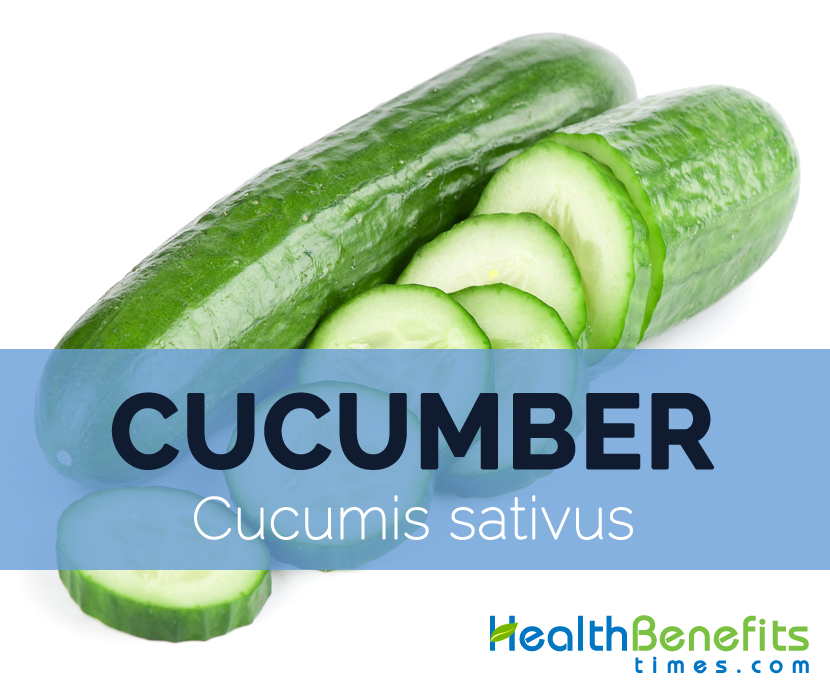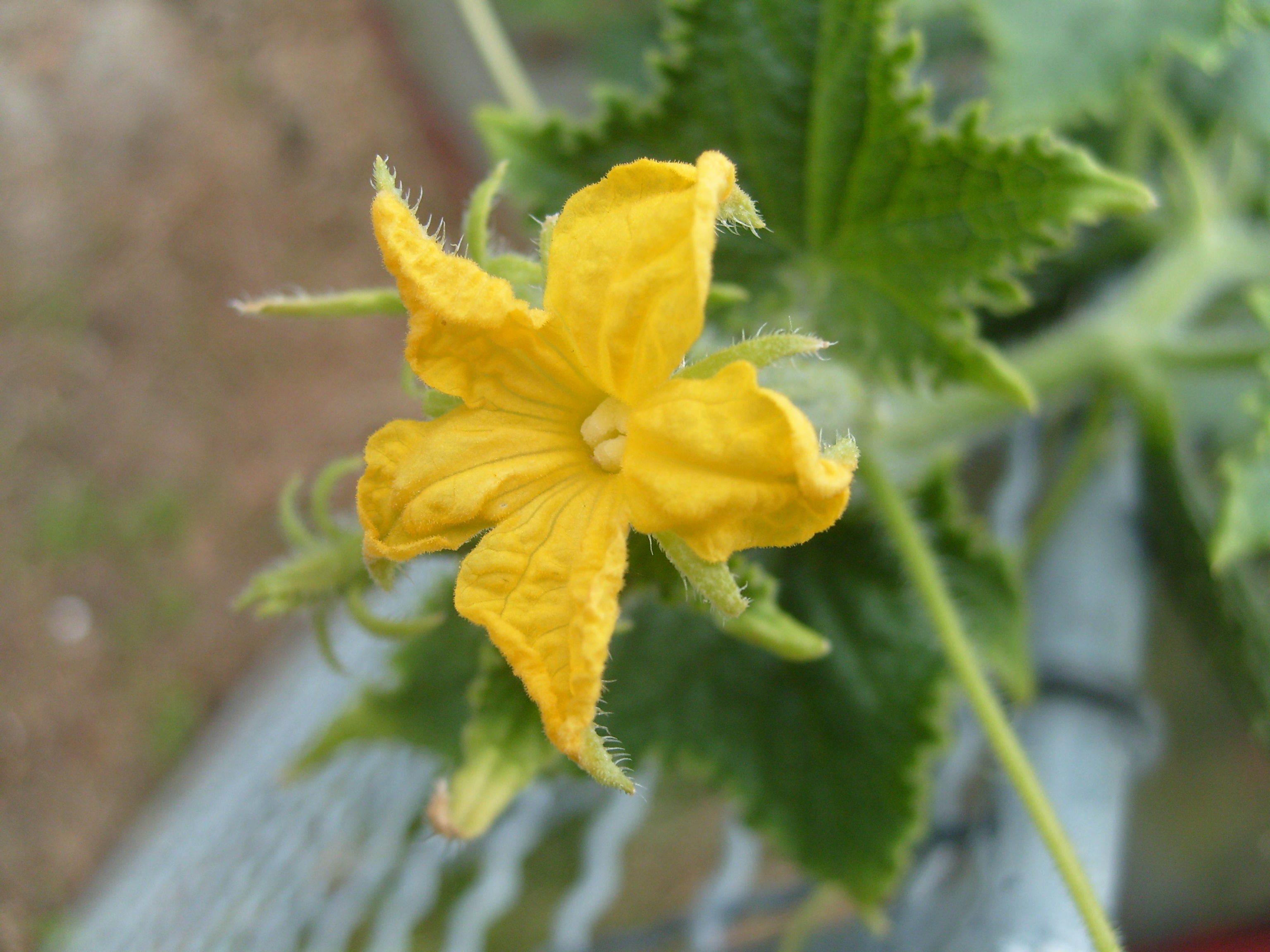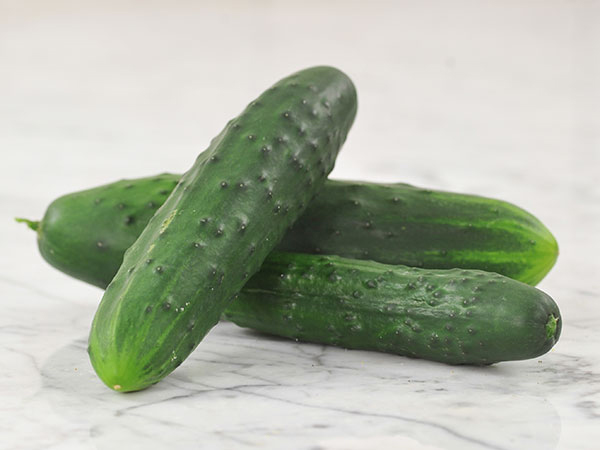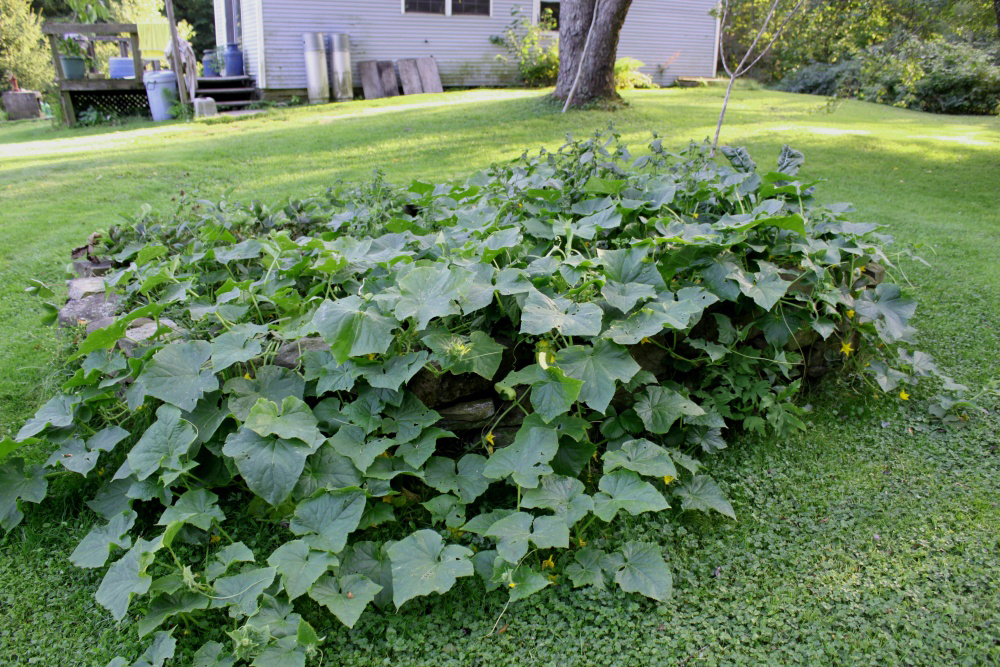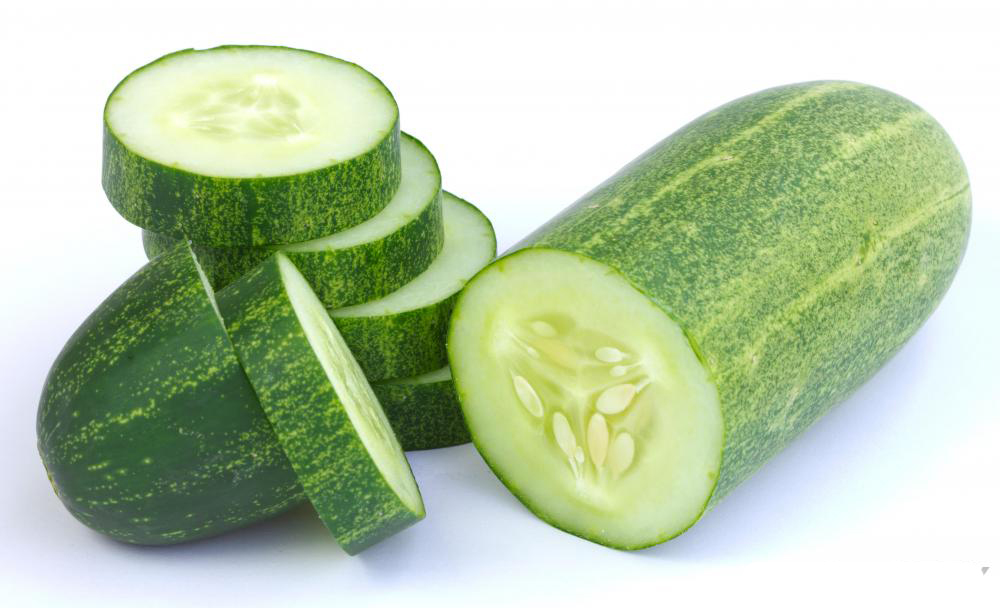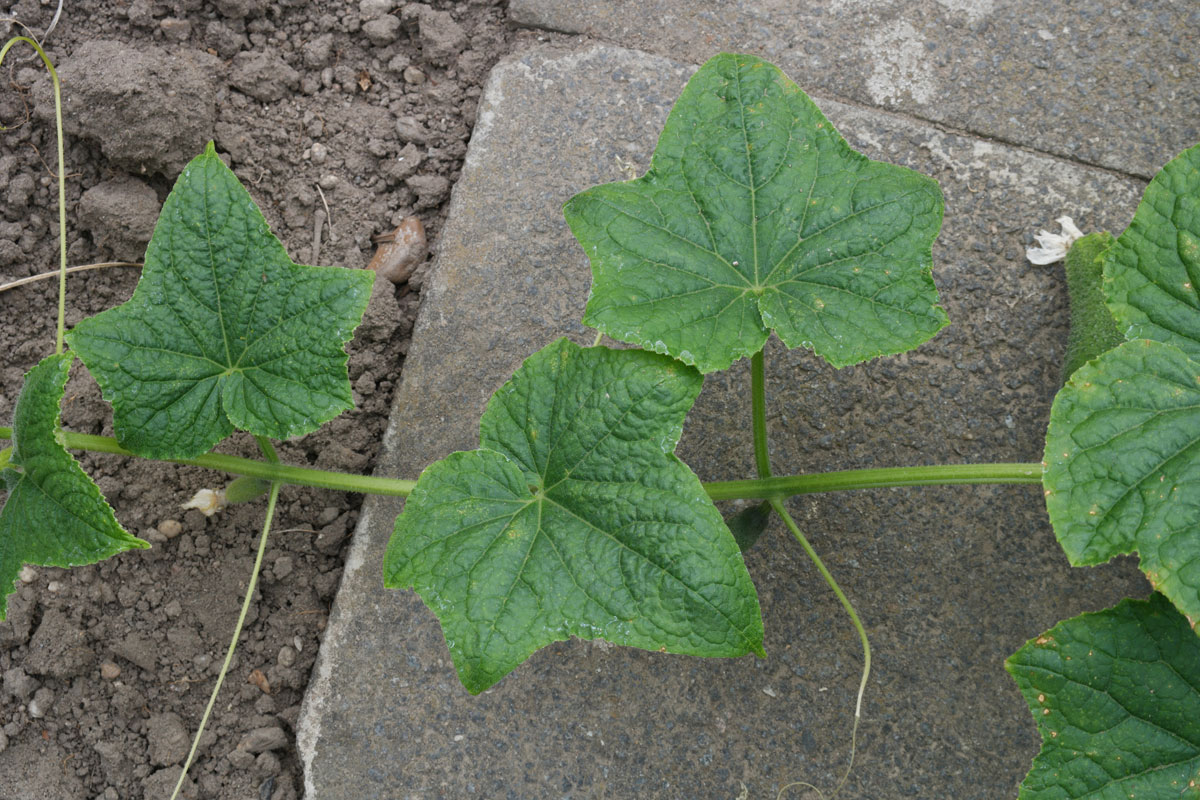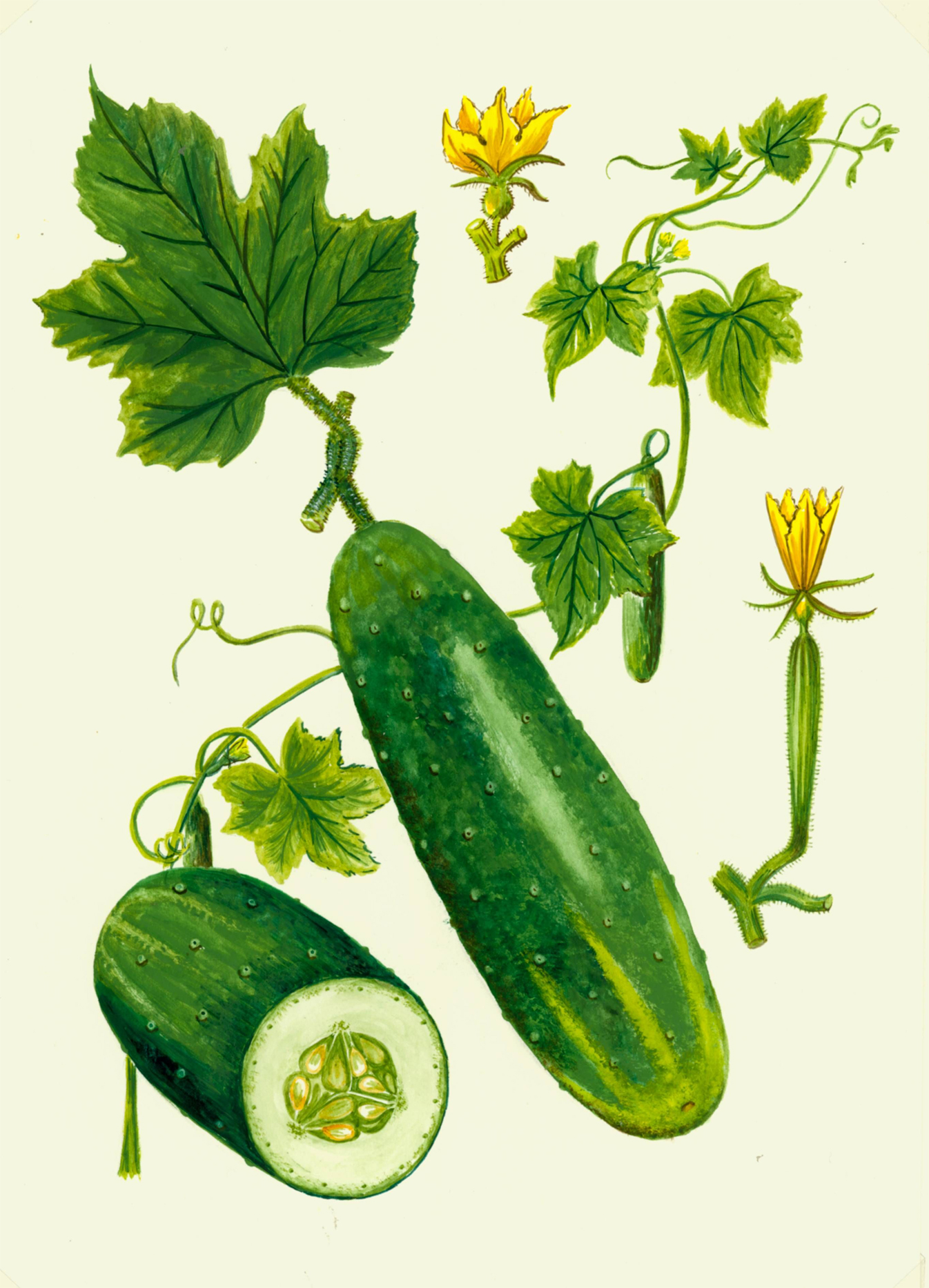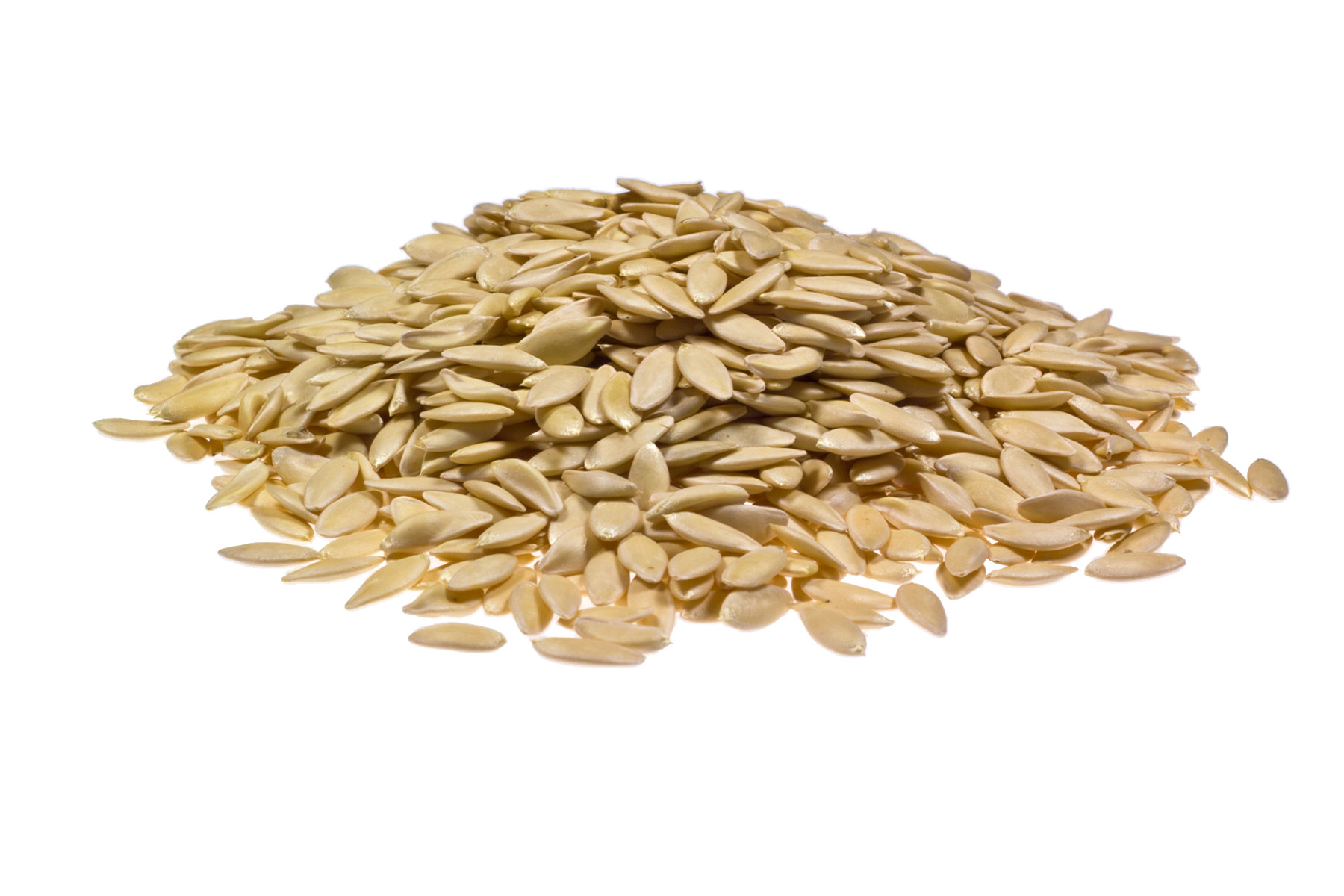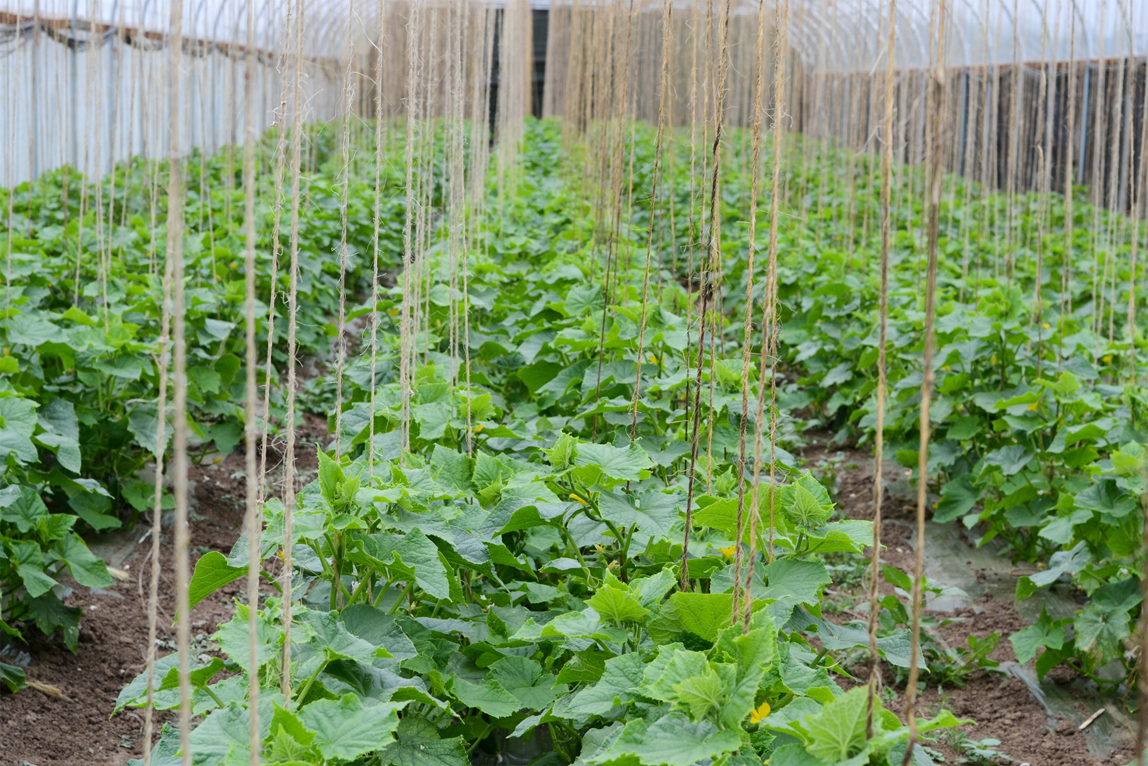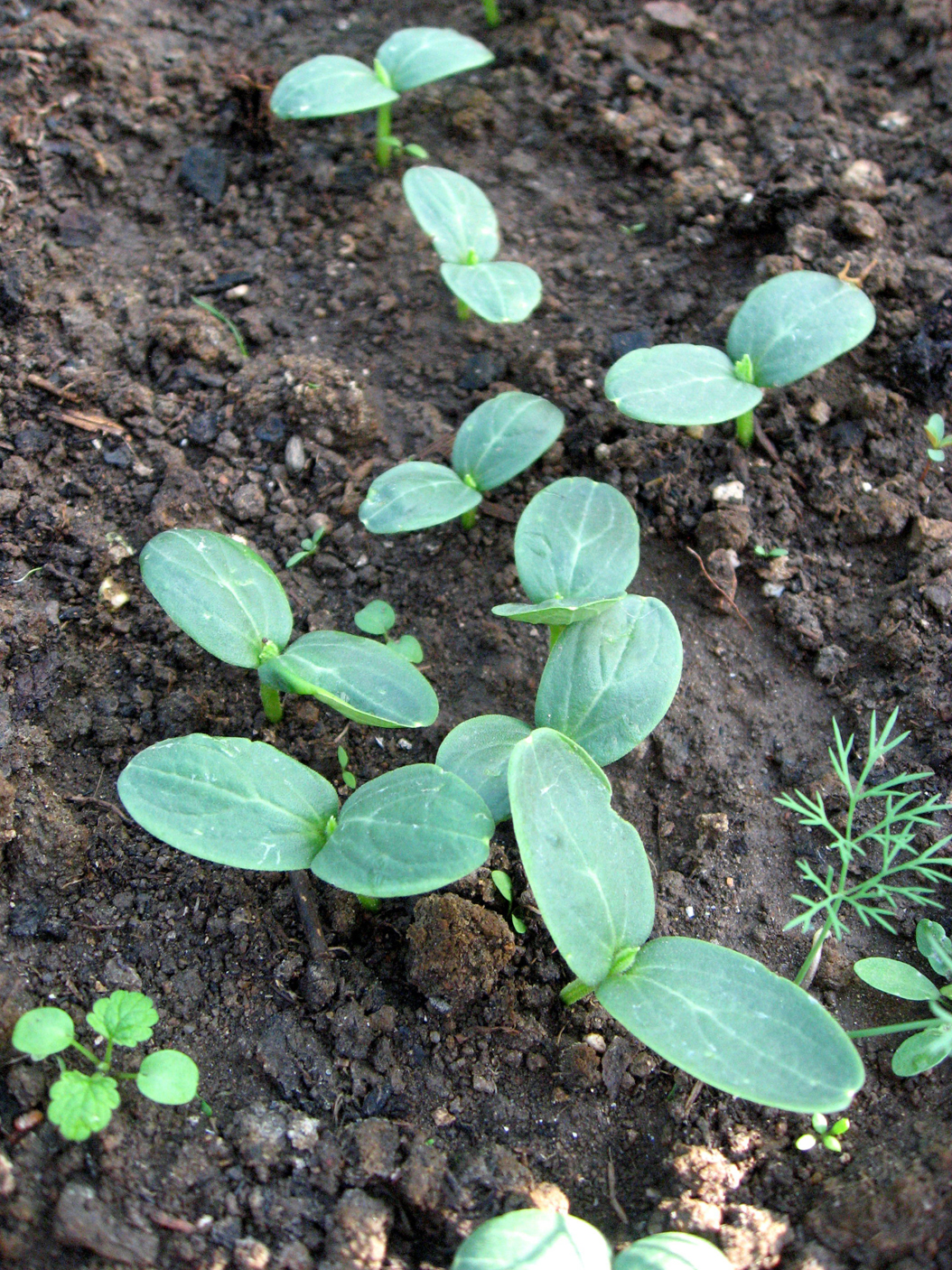These cultivars produce fruit within 50-60 days of planting the crop. It can be cooked as well as eaten raw. The plant typically grows up to 16.4 ft. in length and has four to five angled stem. An average common Cucumber weighs approximately 268 grams. Cucumber is also known as Chinese cucumber, Gherkin and Cucumber. The three varieties of Cucumber are slicing, pickling and burpless.
History
Cucumber was originated from South Asia, but now it is cultivated on most of the continents. The Cucumber was cultivated in Western Asia for at least 3,000 years and then introduced by Romans to other parts of Europe. The evidence shows that Cucumber was cultivated in ninth century in France, fourteenth century in England and by mid-sixteenth century in North America.
Plant
Cucumber is an annual plant with long, weak, trailing and climbing stems which are four to five angled and up to 5 m long. The plants are vines that grow up to 5 m (16.4 ft.) long. The leaves are hairy and alternate. The flowers are yellow having 4 cm (1.6 in) as a diameter. The plant yields flowers during summer and early autumn. The Cucumber plant thrives well in loamy soils. The plant completes its lifecycle in one year.
Fruit
The plant bears globose to cylindrical fruit which is 30 cm long. The fruit is white, yellow or green in color. The inside flesh is pale green which possess many edible white seeds. The seeds are ovate to oblong with the size of 8–10 mm × 3–5 mm.
Nutritional Value
One cup (104 grams) of Cucumber provides 16 calorie, 0.68 gram of protein, 0.11 gram of fat, 3.78 gram of carbohydrate and 0.5 gram of dietary fiber. The same amount provides 14.25% of Vitamin K, 5.38% of Vitamin B5, 4.78% of Copper, 3.63% of Iron and 3.57% of Phosphorus.
Health Benefits of Cucumber
Cucumber is rich in water content which helps to hydrate the body. It is also low in calories. Cucumber normalizes the blood pressure during summer. It is rich in nutrient content which prevents from various health problems such as acidity, asthma, arthritis, gout and eczema.
- Skin health
Cucumber possess high amount of silica that helps to develop the healthy and strong connective tissues in the ligaments, cartilage, tendons, muscles and bone. The high presence of silica provides a brighter and healthier skin. Cucumber is high in water content which helps to hydrate the body. It is also used to treat various skin ailments such as swelling and sunburn. The compound such as caffeic acid and ascorbic acid helps to avoid water loss from the body.
- Prevent kidney stones and constipation
Cucumber contains fiber and water which prevents from kidney stones and constipation. The daily intake of Cucumber increases the fiber intake. Cucumber is also a great source of potassium, Vitamin C, silica, Vitamin A and magnesium. All these nutrients provide various health benefits. (1)
- Maintains blood pressure
The studies show that the high intake of potassium, magnesium and fiber helps to lower the blood pressure and maintains it to normal levels. The intake of the diet rich in these complexes with the diet such as low fat diary items, seafood, lean meat and poultry reduce the systolic pressure by 5.5 points and diastolic pressure by 3.0 points.
- Prevent diabetes
The hormone found in Cucumber is essential for the production of insulin by the beta cells. Cucumber has zero Glycemic Index. The carbohydrates raise the level of glucose but the carbohydrates in Cucumber could be digested by the diabetic patients easily. The intake of Cucumber helps to maintain the glucose levels.
- Body function
Cucumber eliminates the toxins and waste from the body. It also effectively treats arthritis as it clears the uric acid. It assists in the secretion of urine. It also enhances the function of liver, kidney, urinary bladder and pancreatic functions. It is effective for controlling diabetic mellitus and blood pressure. The daily intake of Cucumber juice helps to treat eczema and gout. The addition of Cucumber to the diet prevent from stomach and lung problems. It enhances the flexibility of muscles, promote blood circulation and soothe nerves. Cucumber is rich in minerals which prevent the nail split on the toes and fingers.
- Heart health
Vitamin K in Cucumber prevent from arteries calcification that leads to heart attacks. It prevents deposit of hard and harmful plaque. Vitamin K is an essential nutrient that reduces inflammation and protects cells. The intake of Vitamin K is essential to maintain healthy blood pressure and reduce the risk of cardiac arrest.
- Menstrual problems
Vitamin K assists to regulate the hormone function that helps to lower the PMS cramps and menstrual pains. It is helpful for excessive bleeding and provides relief from PMS symptoms. The excessive bleeding is the cause for more pain and cramps during menstrual cycle. The studies shows that the deficiency of Vitamin K worse these symptoms.
- Prevent cancer
Vitamin K reduces the chances of colon, prostate, nasal, stomach and oral cancer. The study shows that the high Vitamin K helps to stabilize liver cancer and enhance their liver function. The diet rich in Vitamin K reduces the chances of cancer and cardiovascular disease.
- Blood Clot
Vitamin K speeds up the healing of bruising and bleeding of cuts. The deficiency of Vitamin K results to the Haemorrhagic disease of newborns where the blood clotting does not take place properly. The study shows that newborns should be given Vitamin K injection at birth in order to eliminate HDN.
- Bone health
The studies show that an adequate intake of Vitamin K can prevent osteoporosis in people. Vitamin K is essential to use calcium in order to build bones. Vitamin K can promote bone health and lower the chances of bone fractures. The studies reported that Vitamin K increase the mineral density of bones in osteoporotic patients along with lowering the fracture risk. Vitamin K has the positive effect on the calcium balance which is vital for metabolism of bones.
https://www.youtube.com/watch?v=meKNIvaGhhA
Traditional uses
- The fruit is used to treat skin blemishes, heat rash, burns, scalds, sores, wounds and also to soften, moisturize and whiten skin.
- The ripen raw cucumber fruits is used to cure sprue
- In Indo-China, immature fruits are cooked which is used to treat dysentery.
- The seed is used as taeniacide.
- The juice which is extracted from leaves is helpful to treat dyspepsia.
- Cucumbers are used in India to relieve headaches.
Precautions
- It may be allergic to oral cavity and might experience symptom such as swelling and itchiness.
- It contains cucurbitacin which is a compound that results indigestion and gastritis problems.
- The excess consumption of Cucumber causes toxicity and also results baldness.
- The consumption of inorganic Cucumber may cause serious health ailments due to the harmful pesticides.
- The synthetic wax is used to protect from the bruising that results to serious health ailments.
Cucumber – Cucumis sativus Facts
Cucumbers belong to the same family of squashes, melons, luffas and watermelons. It possesses thin tendrils, large leaves and elongated, green fruit which have tapered ends. It bears fruits within 50-60 days after being planted. The pollination takes place by the bees.
| Cucumber Quick Facts | |
|---|---|
| Name: | Cucumber |
| Scientific Name: | Cucumis sativus |
| Origin | South Asia, but now cultivated on most continents. |
| Colors | White, yellow, green |
| Shapes | Globose to cylindrical, Length: 30 cm |
| Flesh colors | Pale green |
| Taste | Watery flavor or light melon |
| Calories | 16 Kcal./cup |
| Major nutrients | Vitamin K (14.25%) Vitamin B5 (5.38%) Copper (4.78%) Iron (3.63%) Phosphorus (3.57%) |
| Health benefits | Skin health, Prevent kidney stones, Maintains blood pressure • Prevent diabetes • Body function |
| Name | Cucumber |
|---|---|
| Scientific Name | Cucumis sativus |
| Native | Originated from South Asia, but now cultivated on most continents. |
| Common/English Name | Chinese cucumber, Gherkin, Cucumber |
| Name in Other Languages | Arabic: Khiyar; Bangladesh: Sasha; Brazil: Pepino; Burmese: Thakhwa; Chinese: Huang Gua; Czech: Okurka Setá; Danish: Agurk; Dutch: Agurk; Eastonian: Harilik Kurk; Fijian: Kiukaba; Finnish: Kurkku; French: Concombre; German: Gurke; Ghana (Ga): Kokómbà; Guinea-Bissau:- Balanta: Betbinho, Crioulo: Pepino; Hungarian: Uborka; India:- Assamese: Tiyah, Bengali: Khira, Hindu: Kakri, Kannada: Maghe Kaayi, Malayalam: Kakkari, Manipuri: Thabi, Marathi: Kaakdi; Mizoram: Fanghma, Oriya: Fanghma, Sanskrit: Bahuphala, Tamil: Am, Telugu: Dosa Kaya; Urdu: Khira, Indonesia:- Java: Katimun, Kalimantan: Betiak, Madurese: Antemon, Malay: Ketimun , Sumatra: Ancimun, Sulawesi: Bojo, Sundanese: Bonteng; Italian: Cetriolo; Japanese: Kyu Uri; Khmer: Trâsâk; Korean: Oh Ee; Laos: Mak; Malaysia: Iban: Rampu, Kelabit: Simun; Malay: Dobba, Sakai: Entimum; Mali (Arabic): Faggus; Nepalese: Asare Kankro; Nigeria (Kanuri): Ngùrlí; Pakistan: Khira; Persian: Kiyar; Philippines: Bisaya: Kalabaga, Bontok: Kasimun, Iloko: Pipino, Sulu: Madas, Tagalog: Pepino; Polish: Ogórek; Portuguese: Pepino; Rotuman: Kukama; Sierra Leone: Gola: Kip s si, Kissi: Kumba, Kono: K s kumba, Krio: K s kumba, Limba: K s kumba, Mende: K s kumba, Temne: Ma-K s kumba, Vai: Kip s si; Slovak: Kumara; Slovenian: Uhorka Siata; Spanish: Alpicoz; Sri Lanka (Sinhala): Pipinya; Swahili: Tango; Swedish: Gurka; Thai (Chiangmai): Taeng Kwaa, Northern Thailand: Taeng Raan; Tibetan: Ga Go Na; Vietnamese: Dua Chot |
| Plant Growth Habit | Annual, monoecious, creeping vine |
| Growing Climate | Cool and warm climate |
| Soil | Loamy |
| Plant Size | Length: 5 m (16.4 ft.) |
| Lifecycle | One year |
| Stem | (4–5 angled) stem; Length: 5 m |
| Leaf | Alternate, hairy |
| Edible parts of the plants | Young fruits: The immature fruits are consumed as salads. It is also served with salads. It is also used to made chutneys. The larger and ripe fruits are added in soups and stews. Leafy shoots: The young shoots are eaten as greens. Seeds: The oil extracted from seeds is used in salad dressing. |
| Flowering Season | Summer and early autumn |
| Flower | Yellow, Diameter: 4 cm (1.6 in) |
| Fruit shape & size | Globose to cylindrical, Length: 30 cm |
| Fruit weight | 268 g |
| Fruit color | White, yellow, green |
| Flesh color | Pale green |
| Fruit peel | Slicing cucumbers– Thick skinned Pickling cucumbers– Thin skinned |
| Flavor/aroma | Mild and refreshing |
| Fruit Taste | Watery flavor or light melon |
| Seed | Ovate-oblong, white, 8–10 mm × 3–5 mm |
| Varieties/Types |
|
| Major Nutritions | Vitamin K (phylloquinone) 17.1 µg (14.25%) Vitamin B5 (Pantothenic acid) 0.269 mg (5.38%) Copper, Cu 0.043 mg (4.78%) Iron, Fe 0.29 mg (3.63%) Phosphorus, P 25 mg (3.57%) Manganese, Mn 0.082 mg (3.57%) Magnesium, Mg 14 mg (3.33%) Potassium, K 153 mg (3.26%) Vitamin B6 (Pyridoxine) 0.042 mg (3.23%) |
| Health Benefits |
|
| Calories in 1cup (104 gm) | 16 Kcal. |
| How to Eat |
|
| Other Facts |
|


